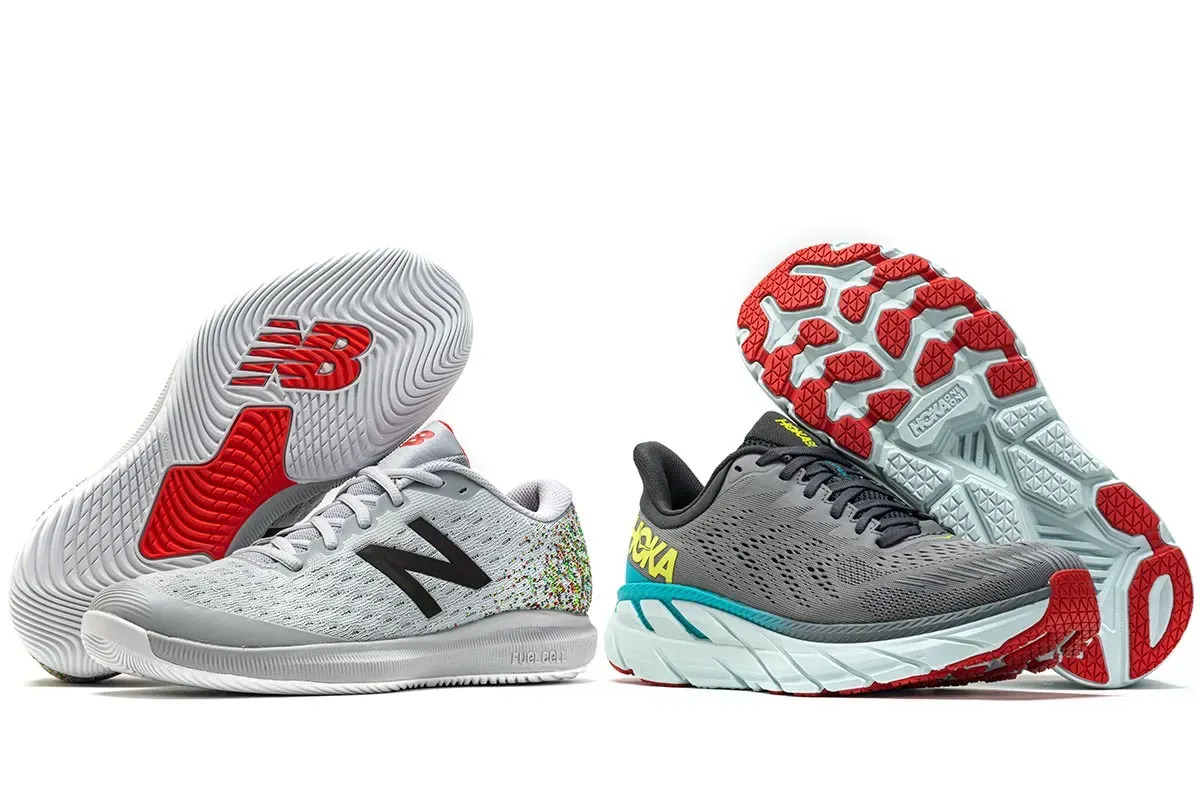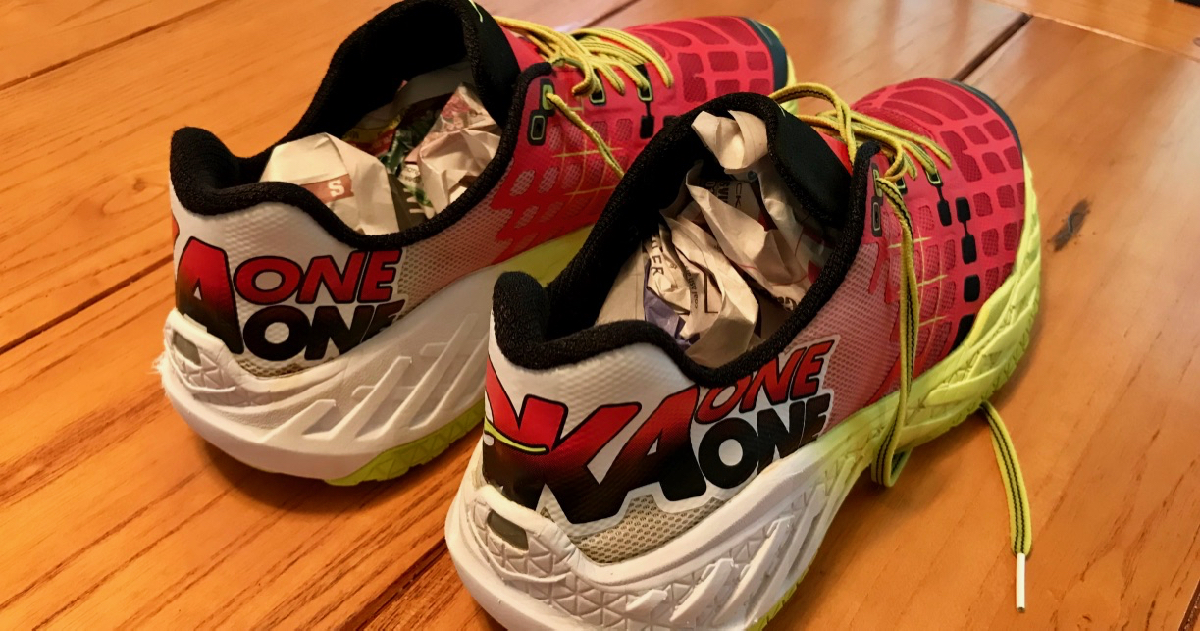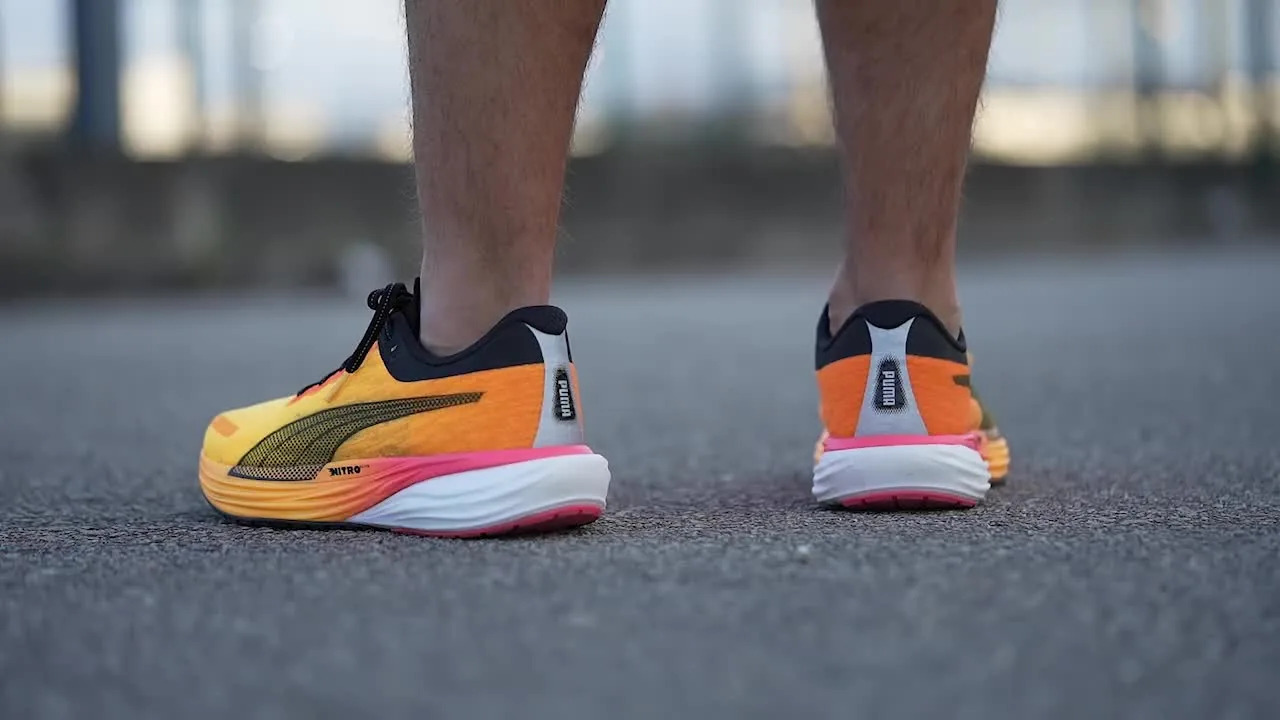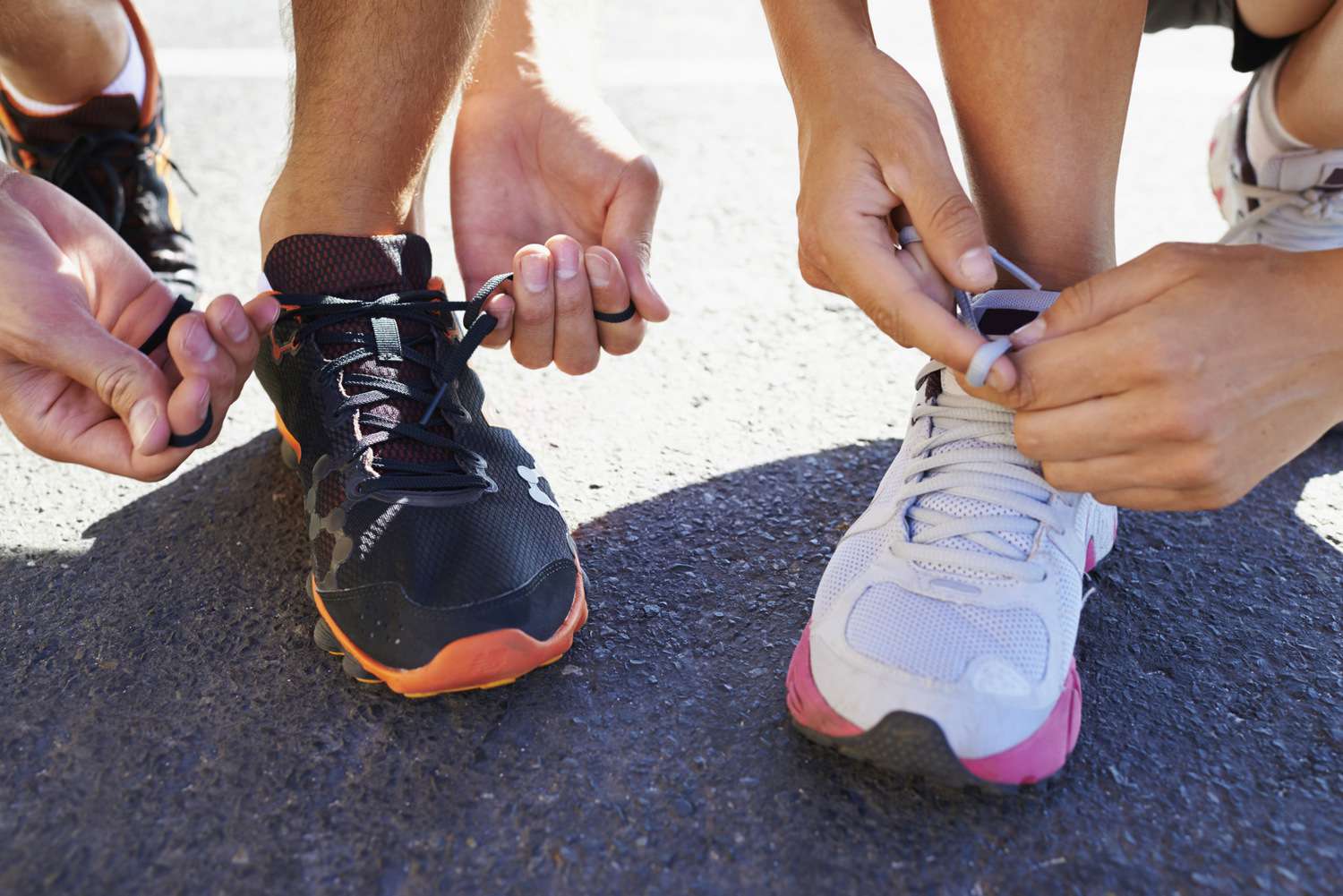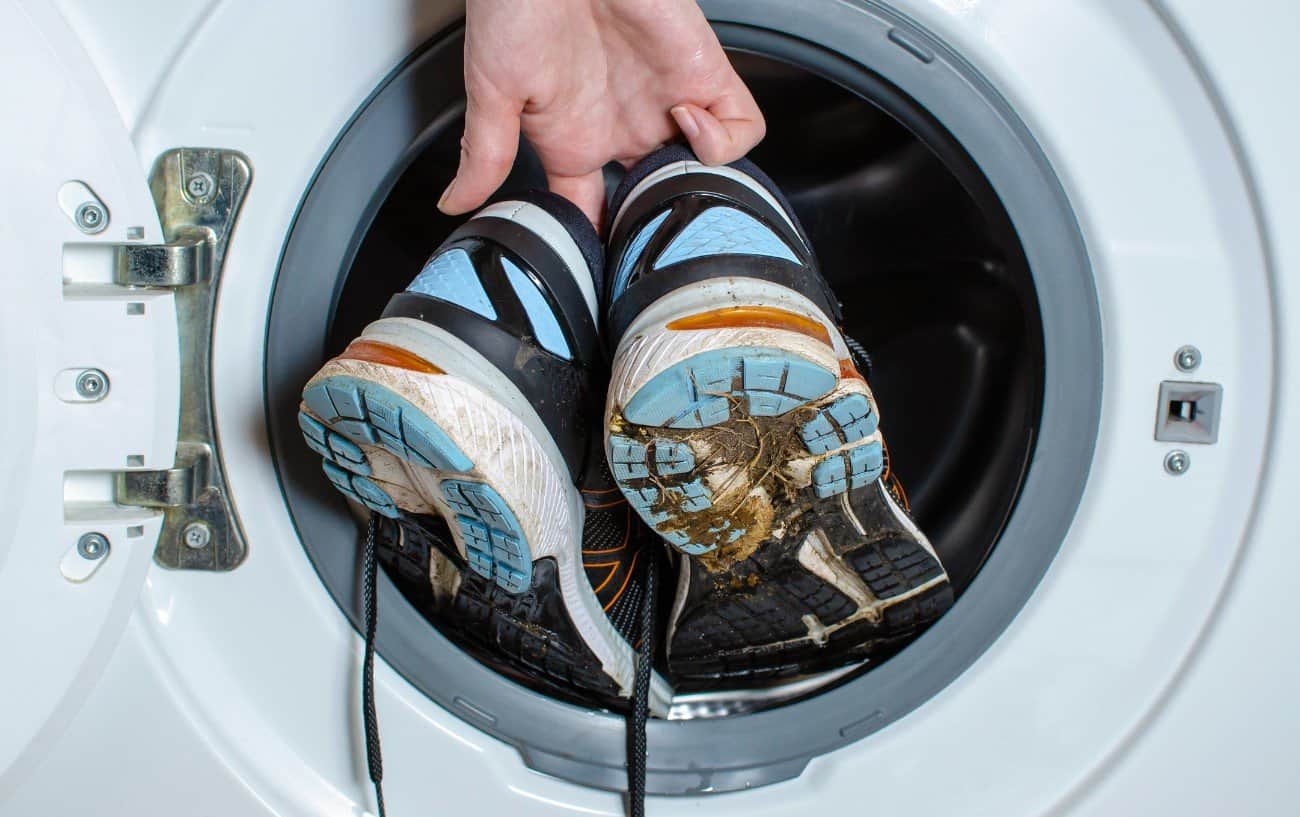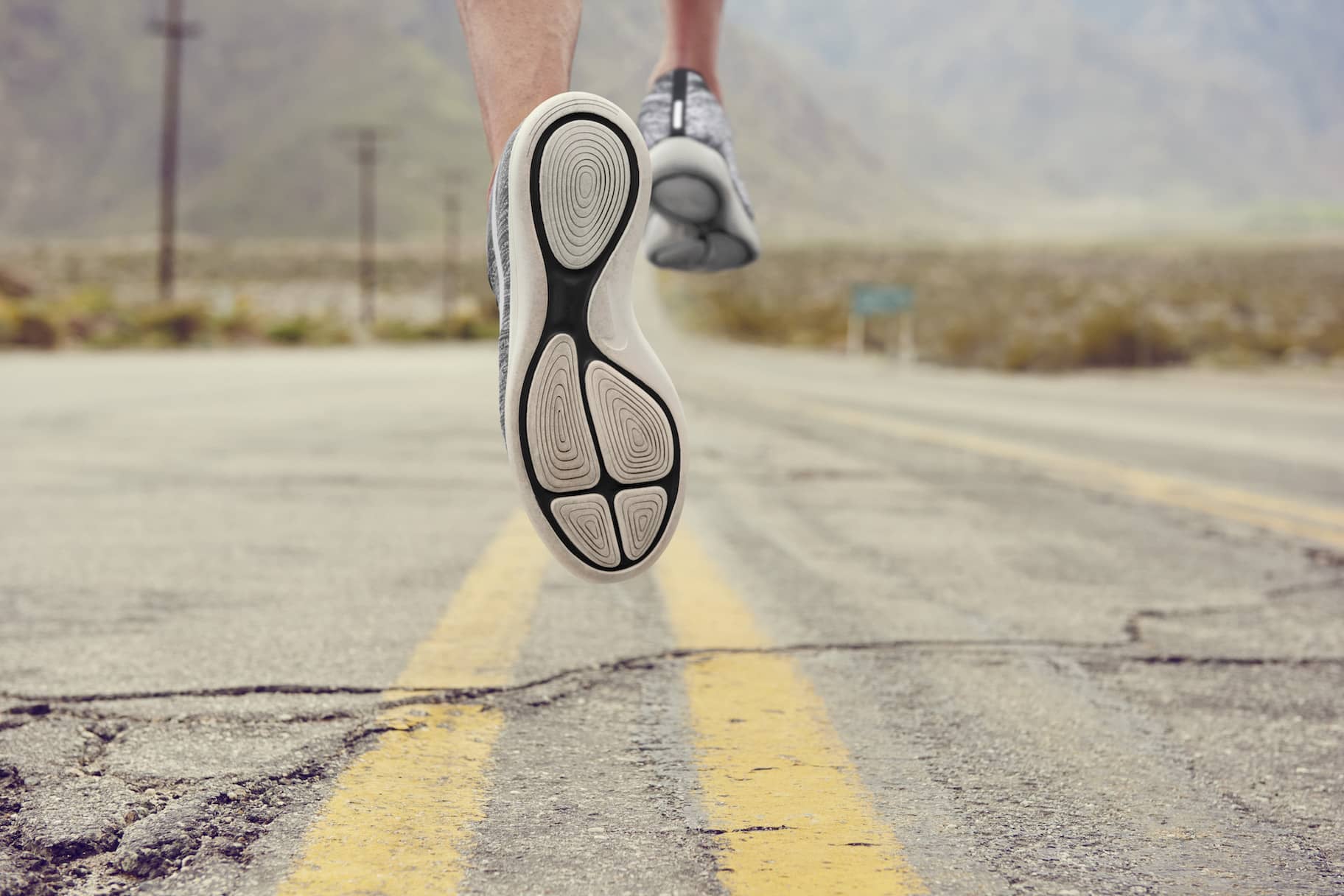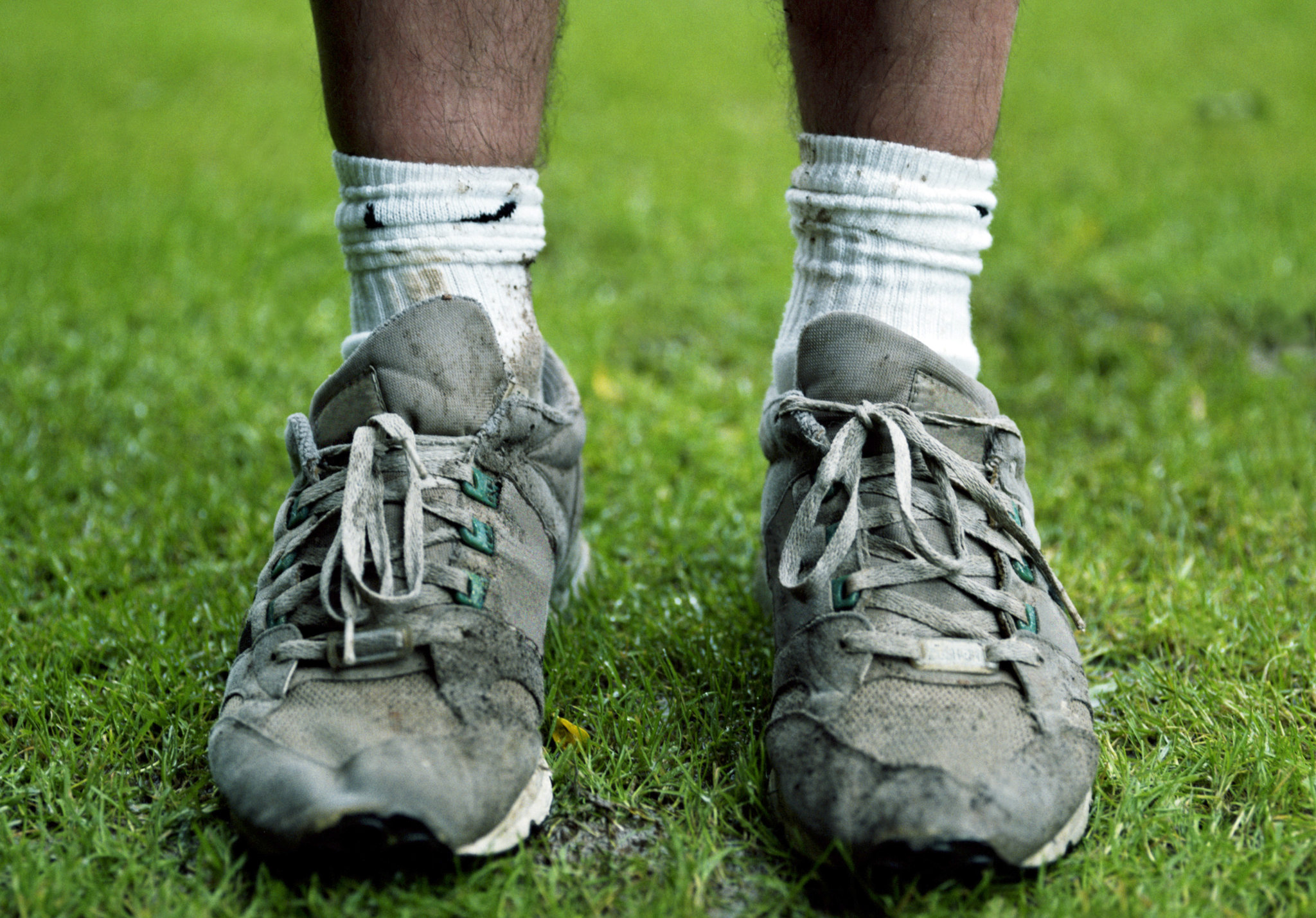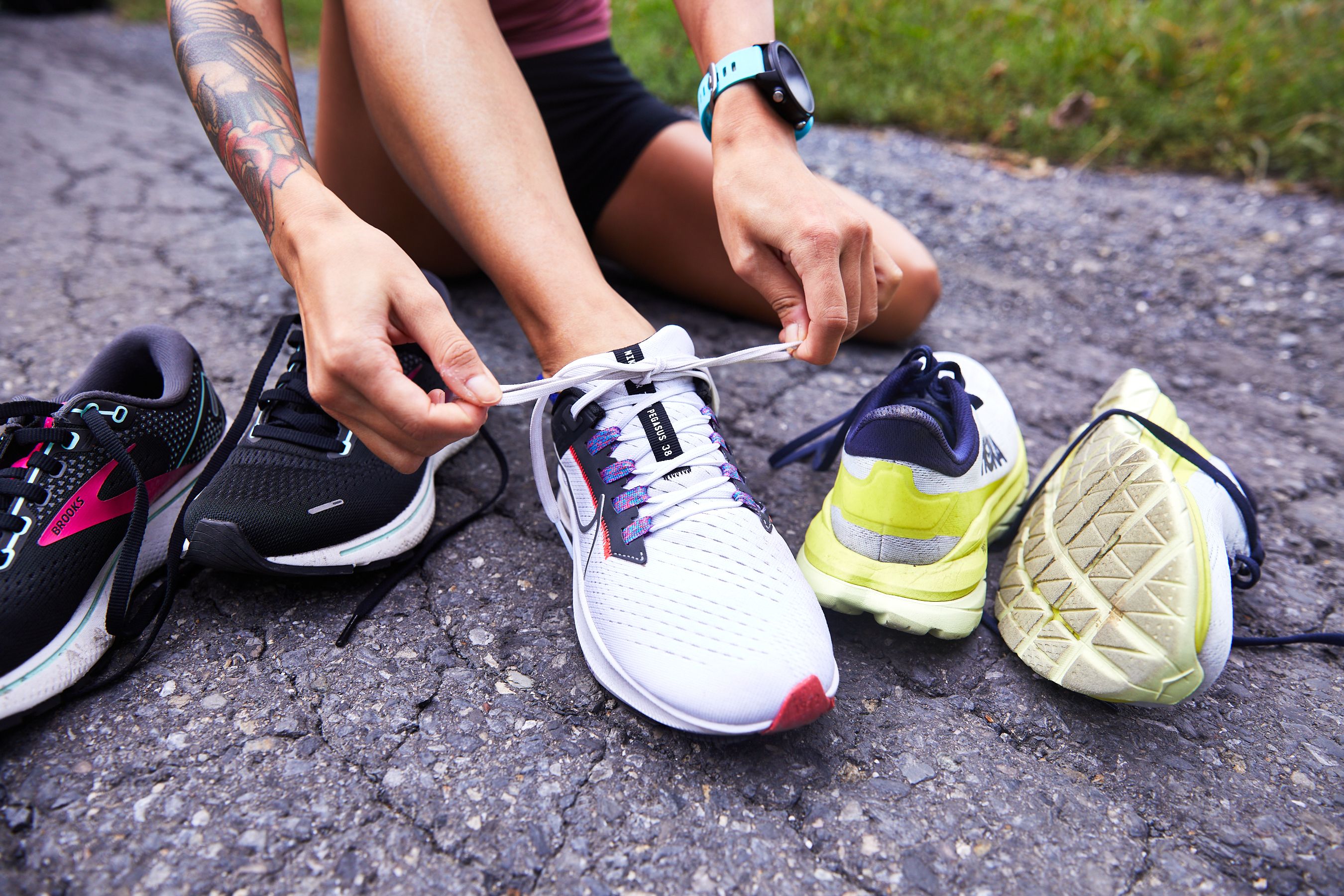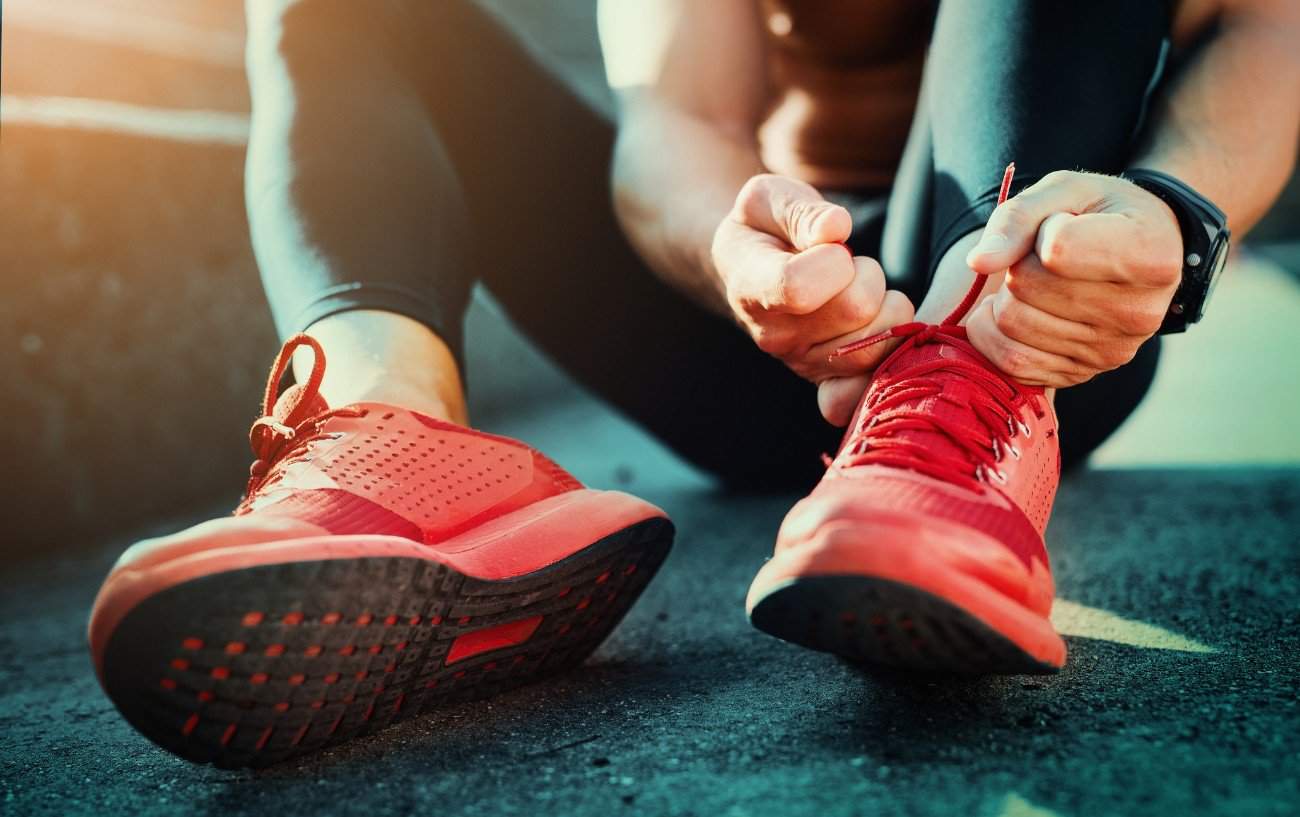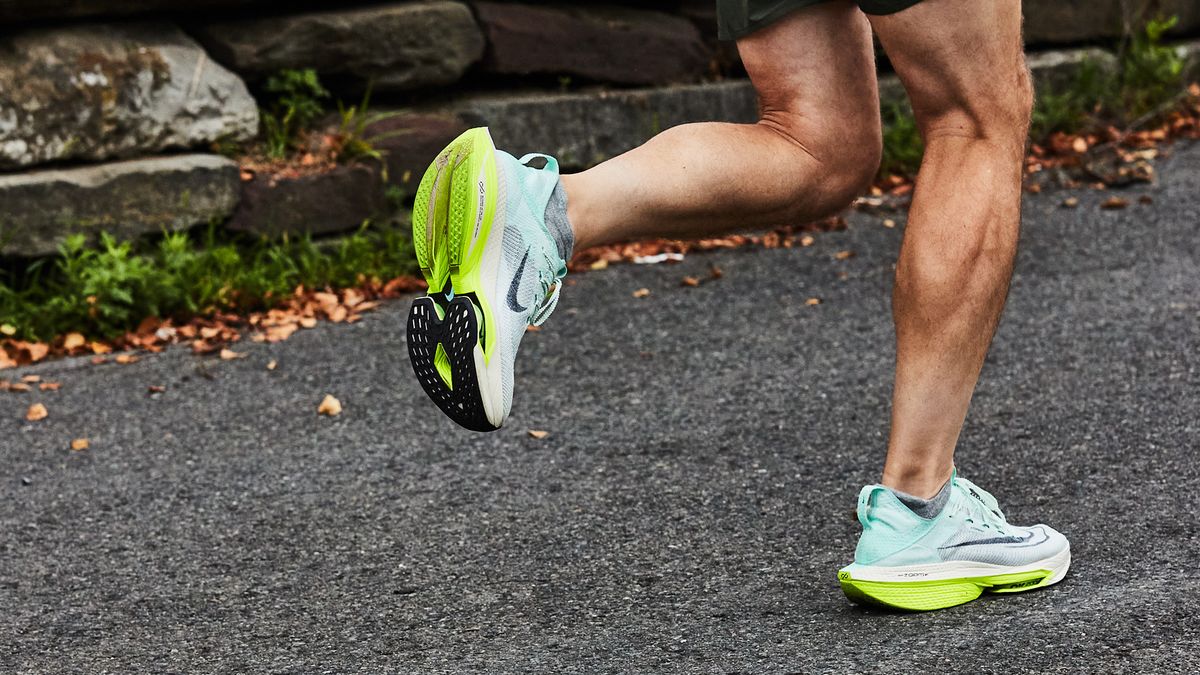

Featured
How Do Running Shoes Help Performance
Modified: January 2, 2024
Discover the benefits of featured running shoes and how they can enhance your performance. Find out how these specialized shoes can improve your running experience and help you achieve your fitness goals.
Introduction
When it comes to enhancing your performance as a runner, one of the most crucial pieces of equipment you need is a pair of high-quality running shoes. The right pair of shoes can make a world of difference in your running experience, providing the necessary support, cushioning, stability, and comfort to help you reach your full potential.
Running shoes are specifically designed to protect your feet from the impact and stress that occurs with every stride. They are not just a fashion statement; they are a carefully engineered tool that can significantly impact your overall performance, preventing injuries and maximizing your efficiency.
In this article, we will delve into the various aspects of running shoes and explore how they can directly influence your running performance. We will discuss the anatomy of running shoes, the key features to look for, and the impact they have on cushioning, stability, flexibility, and fit. By understanding the importance of these factors, you will be better equipped to choose the right pair of running shoes that will improve your performance and keep you comfortable on your runs.
Whether you are a seasoned runner or just starting your running journey, the right pair of running shoes is essential. So, let’s dive in and learn more about the role that these shoes play in optimizing your running performance.
Understanding the Importance of Running Shoes
Running shoes are not just another piece of athletic gear; they are a critical tool that can significantly impact your running performance. Understanding the importance of running shoes is the first step in realizing how they can enhance your overall running experience.
One of the main reasons running shoes are essential is because they provide protection and support to your feet. The repetitive motion of running exerts a tremendous amount of force on your feet, and without the right shoes, you risk injuries such as blisters, plantar fasciitis, shin splints, and stress fractures. Running shoes are designed with advanced cushioning systems and materials that absorb shock and reduce stress on your feet, helping to prevent these common running injuries.
Another key aspect of running shoes is their ability to provide stability and support. As you run, your feet go through a series of motions and pronations. The right running shoes offer features such as midfoot support, arch support, and heel counters, which help to stabilize your feet and minimize excessive motion. This stability ensures proper alignment and reduces the risk of overpronation or supination, which can lead to joint pain and uneven wear on your shoes.
Flexibility and responsiveness are also crucial factors that make running shoes important. The midsole of a running shoe is designed to provide the ideal balance of flexibility and responsiveness, allowing your foot to move naturally while still providing a spring-like bounce to propel you forward. This propulsive energy return translates into improved speed and efficiency during your runs.
Comfort is another vital aspect of running shoes. The right pair will have a snug, yet comfortable fit that reduces the likelihood of blisters and irritation. The upper part of the shoe should be made of breathable materials that help wick away sweat and keep your feet cool and dry, even during long runs. Comfortable running shoes allow you to focus on your performance rather than being distracted by discomfort or pain.
Overall, the importance of running shoes lies in their ability to provide protection, support, stability, flexibility, and comfort. By investing in a quality pair of running shoes, you are not only safeguarding your feet from potential injuries but also optimizing your running performance. So, make sure to take the time to find the right pair that meets your specific needs and preferences, as it can make all the difference in your running journey.
Anatomy of Running Shoes
To truly understand the functionality and design of running shoes, it’s important to familiarize yourself with their anatomy. Running shoes are constructed with various components that work together to provide support, stability, cushioning, and flexibility to the wearer. Let’s take a closer look at the key parts of running shoes:
- Upper: The upper portion of the shoe is responsible for securing the foot in place. It is typically made of breathable materials such as mesh or synthetic fabrics to promote airflow and keep the foot cool and dry. The upper may also have overlays or support structures that offer stability and structure to the shoe.
- Midsole: The midsole is a critical part of the running shoe’s anatomy as it determines the shoe’s cushioning, responsiveness, and stability. It is typically made of ethylene-vinyl acetate (EVA) foam or more advanced materials such as thermoplastic polyurethane (TPU) or polyurethane (PU) compounds. The midsole absorbs shock and provides cushioning, while also offering stability features to support the foot’s natural movement.
- Outsole: The outsole is the bottom part of the shoe that comes in direct contact with the ground. It is made of durable rubber or carbon rubber to provide traction and prevent slippage. The outsole may feature grooves or patterns to enhance grip on different surfaces, ensuring a secure and stable running experience.
- Heel Counter: The heel counter is a rigid structure located at the back of the shoe’s upper. It provides stability and support to the heel, preventing excessive inward or outward rolling of the foot during the running motion. The heel counter is crucial for maintaining proper alignment and reducing the risk of overpronation or supination.
- Toe Box: The toe box is the space in the shoe where the toes are housed. It should provide enough room for the toes to splay naturally without feeling cramped. A roomy toe box ensures comfort and prevents issues such as blisters, bunions, or toenail injuries.
These components work together to create a running shoe that is supportive, protective, and comfortable. The combination of a breathable upper, cushioned midsole, durable outsole, and supportive structures ensures that the shoe can withstand the rigors of running while providing the necessary features to enhance performance.
Understanding the anatomy of running shoes is important when selecting the right pair for your individual needs. By examining the different parts and their functions, you can make an informed decision and choose a shoe that suits your foot type, running style, and desired level of support. This knowledge will empower you to make the best choice and ultimately optimize your running experience.
Key Features of Running Shoes
When it comes to choosing the perfect running shoes, there are several key features that you should consider. These features play a vital role in providing the necessary support, comfort, and performance benefits to enhance your running experience. Let’s explore the key features of running shoes:
- Cushioning: Cushioning is one of the most important features of running shoes. It refers to the built-in padding and shock-absorbing materials in the midsole that help to reduce the impact on your feet and joints. The level of cushioning can vary, with some shoes offering extra plush cushioning for maximum protection, while others provide a more minimalistic feel for a more responsive ride.
- Stability and Support: Stability and support features in running shoes help to prevent excessive foot pronation (inward rolling) or supination (outward rolling) during your stride. These features include medial posts, heel counters, and arch support systems that help to maintain proper alignment and reduce the risk of overpronation. Having the right level of stability and support can greatly improve your running efficiency and prevent injuries.
- Flexibility and Responsiveness: The flexibility and responsiveness of a running shoe determine how well it adapts to your foot movements and how efficiently it transfers energy from each stride. A balance between flexibility and responsiveness is essential for a smooth and efficient running experience. Shoes with too much rigidity can limit natural foot movement, while shoes that are too flexible may lack the energy return necessary for optimal performance.
- Fit and Comfort: A proper fit is crucial for running shoes. It’s essential to find a pair that hugs your foot snugly without causing discomfort or pressure points. Look for shoes with a roomy toe box that allows your toes to move freely and avoid rubbing or squeezing. Additionally, consider factors such as the shoe’s weight, breathability, and overall comfort to ensure a positive experience during your runs.
- Traction: Traction is vital for running shoes, especially if you run on uneven or slippery surfaces. Running shoes with a durable rubber outsole and deep grooves provide excellent grip and prevent slippage. Good traction ensures stability and confidence in each step, allowing you to maintain a consistent pace and stride during your runs.
These key features are essential considerations when selecting the right pair of running shoes. Every runner has unique needs and preferences, so be sure to try on different brands and models to find the shoes that best suit you. Pay attention to how each feature feels during your test runs and consider seeking professional advice from a knowledgeable salesperson or a running specialist to help guide your decision-making process.
By understanding and finding the right combination of these key features in your running shoes, you can enhance your performance, prevent injuries, and enjoy a more comfortable and enjoyable running experience.
Impact of Running Shoes on Performance
The impact of running shoes on performance cannot be overstated. The right pair of shoes can significantly improve your running efficiency, reduce the risk of injuries, and enhance your overall performance. Let’s delve into the ways in which running shoes can have a positive impact on your running performance:
- Cushioning and Shock Absorption: The cushioning and shock-absorbing properties of running shoes play a vital role in reducing the impact of each stride on your feet and joints. High-quality cushioning materials in the midsole, such as foam or gel, help to absorb and dissipate the forces experienced during running. This cushioning not only provides a more comfortable running experience but also decreases the risk of stress-related injuries, such as shin splints or stress fractures.
- Stability and Support: Proper stability and support features in running shoes help to maintain proper alignment and prevent excessive pronation or supination. Pronation refers to the inward rolling of the foot, while supination is the outward rolling. Excessive pronation or supination can lead to instability and increase the risk of injuries. Running shoes with stability features such as medial posts or rigid heel counters can help correct these imbalances, allowing for a more efficient and injury-free stride.
- Flexibility and Responsiveness: The flexibility and responsiveness of running shoes play a crucial role in optimizing your performance. Shoes that are too rigid can restrict natural foot movement, while overly flexible shoes may lack the necessary energy return for efficient running. The right balance between flexibility and responsiveness allows your foot to move naturally while providing the spring-like bounce that propels you forward, leading to improved speed and performance.
- Fit and Comfort: Running in shoes that fit well and are comfortable is essential for performance. Ill-fitting shoes can cause discomfort, blisters, or hot spots, which can distract you and hinder your performance. Additionally, improper fitting shoes may lead to inefficient foot motion. Finding running shoes that provide a snug, supportive fit with ample space in the toe box allows your foot to move naturally and maintain optimal performance.
- Traction: The traction provided by running shoes is crucial, especially when running on challenging terrains or in inclement weather conditions. Shoes with a durable rubber outsole and deep treads offer excellent grip, preventing slips and falls. Good traction allows you to maintain a steady pace and stride without compromising confidence and stability.
By understanding the impact of running shoes on performance and selecting the right pair that suits your unique needs, you can optimize your running experience. It’s important to consider factors such as the type of running you do, your foot type, and any specific biomechanical needs you may have when choosing running shoes. Consulting with a fitting expert or a running specialist can provide valuable insights and ensure that you find the perfect pair of running shoes to enhance your performance.
Cushioning and Shock Absorption
When it comes to running shoes, cushioning and shock absorption are two crucial factors that directly impact your running performance and overall comfort. Proper cushioning and shock absorption properties in running shoes can help reduce the impact on your feet and joints, enhance your running experience, and prevent potential injuries. Let’s take a closer look at the importance of cushioning and shock absorption in running shoes:
Cushioning: The cushioning in running shoes refers to the built-in padding and shock-absorbing materials in the midsole. It acts as a buffer between your feet and the ground, absorbing the impact forces generated with each footstrike. The cushioning not only provides a more comfortable running experience but also helps reduce the risk of stress-related injuries, such as shin splints, plantar fasciitis, and stress fractures.
Running shoes utilize various cushioning technologies and materials to provide optimal shock absorption. Common cushioning materials include ethylene-vinyl acetate (EVA) foam, gel, air pockets, or a combination of these. Each material has its own unique properties, such as responsiveness, durability, and energy return. The amount of cushioning can vary, with some shoes offering a more plush feel for maximum protection, while others provide a more responsive and lightweight experience.
Shock Absorption: Shock absorption is closely related to cushioning and refers to the shoe’s ability to dissipate the impact forces generated during running. When your foot strikes the ground, forces are transmitted through your feet and legs, which can put significant stress on your joints, muscles, and connective tissues. Running shoes with adequate shock absorption properties help to reduce the impact on these structures and protect them from potential damage.
Proper shock absorption not only enhances your overall comfort during your runs but also plays a crucial role in preventing injuries. With each stride, the shoes absorb and distribute the impact forces more evenly, reducing the strain on your feet and reducing the risk of overuse injuries. The shock absorption properties of running shoes are particularly important for runners who regularly train on hard surfaces, such as concrete or asphalt.
It’s worth noting that the amount of cushioning and shock absorption needed in running shoes can vary depending on personal preference, running style, and body weight. Some runners may prefer a softer, more cushioned feel, while others may prefer a firmer, more responsive ride. It’s essential to find the right balance that suits your individual needs and running requirements.
When in doubt, consulting with a fitting expert or running specialist can provide valuable guidance on selecting running shoes with the appropriate cushioning and shock absorption properties. By choosing running shoes with optimal cushioning and shock absorption, you can enhance your running performance while protecting your feet and joints from potential injuries, ensuring a more enjoyable and comfortable running experience.
Stability and Support
Stability and support are essential features in running shoes that play a critical role in ensuring proper foot alignment, reducing the risk of injuries, and enhancing your overall running performance. Whether you are an experienced runner or just starting out, understanding the importance of stability and support in running shoes is crucial. Let’s explore how these features can benefit your running experience:
Stability: Stability in running shoes refers to the shoe’s ability to inhibit excessive foot pronation or supination. Pronation is the natural inward rolling motion of the foot, while supination is the outward rolling motion. When these motions are excessive or uncontrolled, it can lead to imbalances and potential injuries.
Running shoes with stability features are designed to help control and correct these foot motions. They often include technologies such as medial posts, support plates, or dual-density midsoles. These features provide a supportive framework that reduces overpronation and helps maintain proper alignment throughout your running gait. By promoting stability, these shoes can improve running efficiency and reduce the risk of common overuse injuries, such as plantar fasciitis, shin splints, or IT band syndrome.
Support: Support in running shoes refers to the shoe’s ability to provide structural reinforcement, particularly in areas that are prone to instability. Key support features to look for include arch support systems and rigid heel counters.
Arch support systems are designed to provide added stability and reduce excessive arch collapse during the footstrike. This helps to maintain the natural arch shape of your foot and distribute forces more evenly, reducing strain on the arches and minimizing the risk of conditions like plantar fasciitis or flat feet.
Rigid heel counters, usually made of thermoplastic or carbon fiber, enhance stability by locking the heel in place and preventing excessive movement. This helps to maintain proper alignment of the foot and ankle, reducing the risk of ankle sprains or other injuries caused by poor stability.
Having adequate stability and support in your running shoes can make a significant difference in your running performance. They provide a solid foundation and help you maintain a more efficient stride, reducing energy loss caused by excessive motion. By minimizing unnecessary foot movements, stability and support features allow you to transfer energy more effectively, increasing your running efficiency and potentially improving your speed and endurance.
It’s important to note that stability and support needs can vary from runner to runner. Some individuals naturally have a more stable foot or require additional support due to biomechanical factors. Consulting with a fitting expert or a running specialist can help identify your specific stability and support needs and guide you in selecting the appropriate running shoe for your unique requirements.
By choosing running shoes with the right stability and support features, you can optimize your foot alignment, reduce the risk of injuries, and ultimately enhance your overall running performance.
Flexibility and Responsiveness
Flexibility and responsiveness are key factors in running shoes that directly impact your running performance, efficiency, and overall comfort. These features determine how well the shoe adapts to your foot movements and how efficiently it transfers energy from each stride. Let’s explore the importance of flexibility and responsiveness in running shoes:
Flexibility: The flexibility of a running shoe refers to its ability to bend and move with your foot during the running motion. A shoe with optimal flexibility allows for a more natural and unrestricted foot movement, enhancing your running efficiency and reducing the risk of stiffness or discomfort.
Flexibility in running shoes is crucial as it allows the foot to move through its natural range of motion during the gait cycle. This promotes a more efficient transfer of energy from the foot to the ground, improving your overall running performance. Additionally, a flexible shoe can help prevent muscle imbalances and reduce the risk of injuries by allowing the foot to move in a more biomechanically aligned manner.
Responsiveness: Responsiveness refers to the shoe’s ability to return energy to the runner during the push-off phase of each stride. A responsive shoe offers a spring-like bounce, providing an extra boost to your running performance. It allows for a more efficient transfer of energy from the foot to the ground, propelling you forward with each step.
A responsive running shoe enables a quicker and more powerful push-off, leading to increased speed and improved running efficiency. This responsiveness can be achieved through the combination of lightweight materials and innovative midsole technologies. By providing that extra energy return, these shoes enhance your running experience and can make a noticeable difference in your overall performance.
The ideal blend of flexibility and responsiveness in a running shoe may differ depending on factors such as your running style, foot type, and personal preference. Some runners may prefer a more flexible shoe, allowing for more natural foot movement and a better ground feel. Others may prioritize a higher level of responsiveness to gain that additional energy return. Ultimately, finding the right balance that suits your individual needs and running goals is key.
When selecting running shoes, it’s essential to consider the level of flexibility and responsiveness that works best for you. Testing shoes during short runs or trying them on in-store by performing a few dynamic movements can provide insights into their flexibility and responsiveness. Additionally, seeking the advice of fitting experts or running specialists can help guide you in selecting shoes that match your desired level of flexibility and responsiveness.
By choosing running shoes that offer the right amount of flexibility and responsiveness, you can enhance your running performance, maximize efficiency, and make your runs more enjoyable and dynamic.
Fit and Comfort
Fit and comfort are two crucial elements of running shoes that directly impact your running performance and overall enjoyment. The right fit ensures that your foot is securely supported, while comfort keeps you focused and motivated during your runs. Let’s explore the importance of fit and comfort in running shoes:
Fit: The fit of a running shoe refers to how well it conforms to the shape of your foot. It should provide a secure and supportive feel without any discomfort or pressure points. A proper fit ensures that your foot remains in place, minimizing the risk of blisters, irritation, or instability.
An ill-fitting shoe can cause a host of problems, including rubbing, chafing, or squeezing, which can distract you from your running performance. It’s crucial to find a running shoe that hugs your foot snugly, particularly in the heel and midfoot area, while providing enough room for your toes to splay naturally in the toe box.
Since people have different foot shapes and sizes, it’s important to try on several different brands and models to find the shoe that fits your foot the best. Additionally, factors such as lacing techniques and foot volume can affect the fit. Consulting with a fitting expert or running specialist can provide valuable guidance on finding the right fit for your feet.
Comfort: Comfort is at the forefront of any runner’s mind. Running shoes should provide a high level of comfort to keep you focused and motivated during your runs. Comfortable shoes allow you to concentrate on your performance rather than being distracted by discomfort or pain.
Look for running shoes with features that prioritize comfort, such as padded collars, cushioned insoles, and breathable uppers. The upper material should be made of breathable materials that wick away moisture, keeping your feet cool and dry even during long runs.
Additionally, the weight and overall feel of the shoe contribute to comfort. Lighter shoes can offer a more effortless and agile running experience, particularly during speed workouts or races. However, it’s important to find the right balance between weight and cushioning to ensure adequate protection and support.
The key to finding a comfortable running shoe is to listen to your body. Pay attention to how the shoe feels during your test runs. If discomfort or pain persists, it may be an indication that the shoe is not the right fit for you.
Remember that comfort is subjective, and what works for one person may not work for another. It’s crucial to find a shoe that feels comfortable to you and meets your specific needs. Trying on different shoes and seeking expert advice can help you make an informed decision based on your unique preferences and requirements.
By choosing running shoes that offer a proper fit and exceptional comfort, you can enhance your running experience, reduce the risk of discomfort or injuries, and ensure that your focus remains on achieving your running goals.
Choosing the Right Running Shoes
Choosing the right running shoes is essential to optimize your running performance, prevent injuries, and ensure a comfortable running experience. The process of selecting the perfect pair can be overwhelming with the vast array of options available. However, by considering a few key factors, you can make an informed decision that suits your specific needs and preferences. Here are some important considerations when choosing running shoes:
Foot Type and Pronation: Understanding your foot type and pronation is crucial in selecting the right running shoes. Pronation refers to how your foot rolls inward as you run. There are three main types of pronation: overpronation, neutral pronation, and supination (underpronation). Knowing your pronation type can help you determine the level of support and stability you need in a running shoe. Consult a fitting expert or utilize footprint analysis tools to identify your pronation type.
Running Style: Your running style plays a significant role in selecting the appropriate running shoes. Consider factors such as the distance you typically run, the surfaces you run on, and your desired pace. For example, if you’re a trail runner, you may need shoes with additional traction and durability, whereas a marathon runner may prioritize lightweight shoes with ample cushioning for long-distance comfort.
Arch Type: The shape of your arches can also influence the type of running shoes that would best suit you. There are three main arch types: low arches (flat feet), medium arches, and high arches. Each arch type requires different levels of support and cushioning. For example, runners with low arches may benefit from shoes with motion control and stability features, while those with high arches may need shoes with added cushioning to absorb shock effectively.
Try Before You Buy: It’s crucial to try on running shoes before making a purchase. Visit a specialty running store where experts can assess your foot size and shape and assist in finding the right shoes. Try on various brands and models, and take the time to jog or run in them to get a better feel for their fit, comfort, and performance.
Comfort and Fit: Ensure that the running shoes you choose provide a comfortable and snug fit. Your toes should have enough room to wiggle without feeling cramped, and there should be no pressure points or excessive rubbing. Consider factors such as the width of the shoe, the material of the upper, and the padding around the collar and tongue for maximum comfort.
Price and Quality: While budgetary constraints are important, it’s essential to prioritize quality when it comes to running shoes. Opt for well-known brands with a reputation for producing high-quality running shoes. Investing in a durable and well-constructed pair of shoes will provide better long-term performance and protection for your feet.
Remember, choosing the right running shoes is a highly individual process. What works for one runner may not work for another. Take the time to assess your specific needs, consult experts, and try on different options to find the perfect pair that combines the right fit, comfort, support, and features for your running goals.
By making an informed choice and selecting the right running shoes, you set yourself up for an enjoyable and successful running journey ahead.
Conclusion
Choosing the right running shoes is essential for optimizing your running performance, preventing injuries, and ensuring a comfortable and enjoyable running experience. Throughout this article, we have explored the various aspects of running shoes that directly impact your performance, including cushioning and shock absorption, stability and support, flexibility and responsiveness, fit and comfort, and key features to consider. By understanding the importance of these factors and selecting the appropriate running shoes that meet your specific needs, you can take your running to the next level.
Running shoes with proper cushioning and shock absorption properties help protect your feet and joints from the impact of running, reducing the risk of injuries and enhancing overall comfort during your runs. Stability and support features in running shoes promote proper foot alignment, improve efficiency, and reduce the risk of overpronation or supination. Flexibility and responsiveness ensure natural foot movement and efficient energy transfer, leading to improved speed and performance. A proper fit and comfort in running shoes provide stability, prevent discomfort, and allow you to stay focused on your running goals. Additionally, understanding the key features of running shoes, such as traction and durability, helps in making an informed decision that aligns with your running style and preferences.
Remember, choosing the right running shoes is a highly personal process. Your foot type, pronation, running style, and individual preferences all play a role in finding the perfect pair. It is crucial to try on different brands and models, consult fitting experts, and consider factors such as comfort, fit, and quality to make the best choice.
Investing in high-quality running shoes that fit well and provide the necessary support and features can make a significant difference in your running journey. Prioritizing your comfort and performance will allow you to reach your full potential as a runner and enjoy the benefits of a healthy and fulfilling running lifestyle.
So, lace up your shoes, hit the road, and experience the difference the right pair of running shoes can make.
